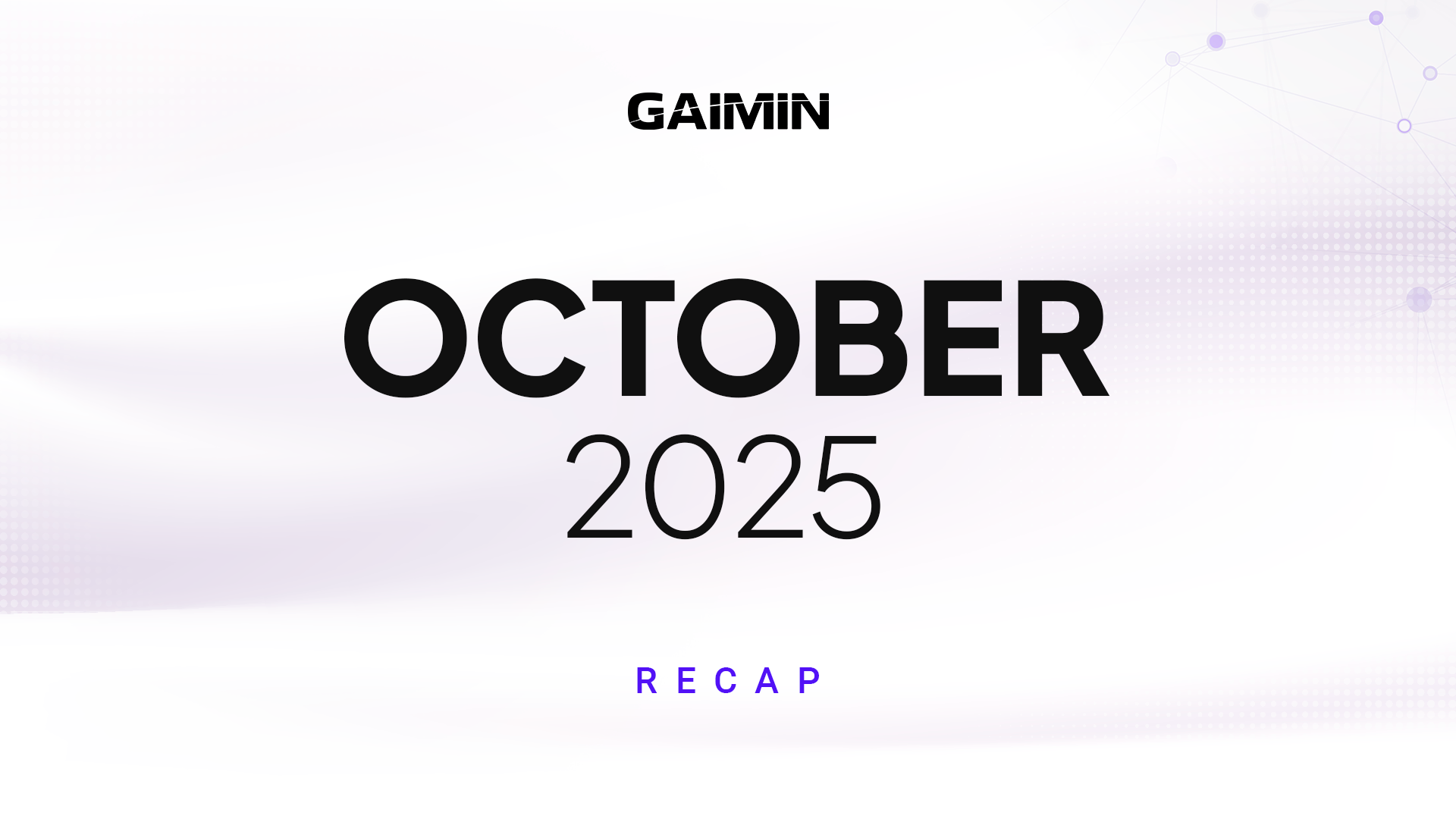

A Dive into GAIMIN’s Position in Revolutionising Distributed Computing
The distributed computing industry is at the forefront of a Web3 technological revolution, especially with the advent of DePIN (Decentralized Physical Infrastructure Networks). At GAIMIN, we’re proud to be trailblazers of this revolution, being the world’s first all-in-one DePIN provider not just for GPU but also CPU, Bandwidth, and Hard Drive. Recently we surpassed 500,000 nodes in our distributed network of computers and our unique approach has been to tap into the idle computational power of gaming PCs to create and leverage a decentralized network of supercomputers that is both powerful and sustainable. At the time of writing this, we have the world’s largest active decentralized distributed computing network at over 90k monthly active users (MAUs).
The global market for computational power is immense, encompassing both Web2 and Web3 technologies. According to Precedence Research, the Graphic Processing Unit (GPU) Market was valued at $56.25 Billion in 2023, with projections to surpass $773.07 billion by 2032; growing at a compound annual growth rate (CAGR) of 33.8%. This market has seen exponential growth as businesses and individuals have increasingly relied on cloud services for data storage, processing, and more.
In contrast, the Web3 computational power market is also experiencing rapid growth. According to a report by MarketsandMarkets, the global blockchain infrastructure market, which underpins much of Web3, is valued at $20.1 billion in 2021. This market size is also projected to reach around $248.9 billion by 2029, growing at a CAGR of 65.5% during this period. This growth is fueled by the increasing adoption of decentralized applications (dApps), DeFi, and other blockchain-based technologies.
At GAIMIN, we’re positioned on both sides of the camp. We serve clients' cloud computing demands from the Web 2 sector, through our decentralized Web3 infrastructure that harnesses unused computational power from gaming PCs. This unique approach allows us to capitalize on the vast, untapped potential within the existing hardware market, making us a key player in the future of distributed computing.
The computational power industry is fiercely competitive, with several major players dominating the Web2 sector and strong projects already established in the Web3 space.
In the Web2 space, industry giants like Amazon Web Services (AWS), Microsoft Azure, and Google Cloud have been leading the charge. AWS, for example, controlled approximately 31% of the global cloud computing market as of Q1 2024, according to Statista. Microsoft Azure and Google Cloud followed with 25% and 11% market shares respectively, while the rest of the industry shared the remaining 33%.
These companies offer vast computing resources, but they operate within a centralized model, which, while powerful, also comes with limitations, particularly in terms of scalability, cost, and environmental impact.

On the Web3 (DePIN) side, the sector is more fragmented and niche-focused in most cases, with numerous smaller players emerging to offer decentralized computing solutions for specific industries. Most DePIN providers in the Web3 space have crypto tokens for their projects, and since this sector is relatively new and the companies have limited public data, their token market caps are usually used as a reference point for their scale. Some notable competitors include:
The competition across both sectors, Web2 and Web3 is vast and significant. But what sets GAIMIN apart is not just what we do, but also who we provide value for, on both the demand and supply side of the distributed computing business and how we have chosen to provide this value to both parties.
On the demand side, GAIMIN satisfies various need-cases for computational power, to individuals and companies, for a lot of applications including blockchain processing, P2P file sharing, and AI rendering. On the supply side, our ability to niche down and aggregate computational power from a vast, existing network of powerful PCs in one of the most vibrant and ever-growing industries - Gaming; and rewarding them in a unique way. The $GMRX token reward earned by gamers on our platform can be withdrawn and converted to real cash, used to purchase more games & assets on our app, or used to access premium features and benefits on our other platforms.
These value propositions give us a unique advantage in scalability and efficiency. At GAIMIN, we’ve successfully tapped into the gaming community, which has allowed us to create a decentralized computing network with unmatched potential, with our network currently comprising 500,000+ gaming PCs.
While exact market share data for GAIMIN in the Web3 distributed computing sector is proprietary, we estimate that our network’s computational power positions us as a formidable competitor in both the Web2 and Web3 spaces. With the global gaming PC market size value expected to grow to $130 billion by 2030, according to Grand View Research, the potential for expansion is enormous.
Our leadership in the distributed computing industry is built on several key pillars:

As the demand for computational power continues to grow, driven by advancements in AI, blockchain, and other digital technologies, GAIMIN is uniquely positioned to lead the industry into a new era. Our decentralized approach not only addresses the limitations of traditional cloud computing but also aligns perfectly with the principles of Web3 and DePIN.
We’re excited about the future and confident that GAIMIN will not only meet the demands of today’s market but will also drive the innovations of tomorrow. Our journey is just beginning, and we invite you to join us as we reshape the future of distributed computing.
If you are new to GAIMIN, then for a complete review of “The GAIMIN Project”, we recommend you take a look at our Presentation Deck. If you want to join our network of computers, click here to download GAIMIN and become a user today.


